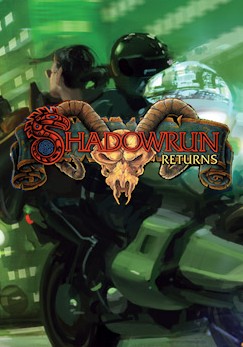Shadowrun Returns Review
-
Category: ReviewsHits: 15595

Article Index
Page 2 of 3
Many possible characters, only one (linear) storyWhile at times playing the campaign feels like playing a strong pen and paper adventure module, it also has to be said that I rarely played or DMed campaigns that felt as linear and directed as "The Dead Man's Switch" is. It's a campaign that barely gives you any breathing room, with few opportunities provided to explore or pursue side quests or missions. There is a system in place to start optional "runs" from the Seamstresses Union, your de facto base of operation, but disappointingly I can only remember one time in the game where it actually got used, with the only other fully-fledged side mission I can remember offered by a companion in the middle of the story. To add to this, some minor side quests are also sprinkled throughout the main locations, though they are brief and usually conclude after a combat encounter or one or two dialogues, and you can get additional info and loot if you explore the story locations thoroughly.
The game doesn't branch in any way, and only offers a few very minor choices: stuff like choosing not to give an heirloom to sell it to a fence later, or freeing a character rather than handing it over to your employers. It does, however, excel at offering you multiple ways to get to the same endpoint: there are a lot of opportunities to use your skills (though some are used more than others), bribe individuals, and also gather information and items to use to accomplish your goals. For example, early on in the game I was able to lull an officer into a false sense of security by offering him some coffee (or soykaf, to be precise), which gave me the chance to get on a crime scene without having to pass any skill checks. It's an excellent approach to quest design that unfortunately doesn't shine as much as it could due to the plot's linearity and the numerous instances of unavoidable combat.
Combat and character progression
Shadowrun Returns makes use of a classless system that is, from what I gather, loosely based on the 2nd and 3rd iteration of the pen and paper ruleset. After choosing your gender, which is essentially cosmetic and has no bearing on actual gameplay, you get to choose between five races - humans, elves, dwarfs, orks and trolls - each with their own attribute limits and bonuses. This effectively means that, for example, you will never be able to make a troll that is as charismatic as the most charismatic elf or human, but you will be able to make one that is still reasonably charismatic and put the extra Karma points - which get awarded to you after completing objectives - you would have spent on Charisma elsewhere.
After selecting your race, you get to choose whether you want to select an archetype - premade skills and attributes allocations that essentially act as nonbinding classes - or distribute your Karma pool how you see fit. Every skill is governed by an attribute and can't be raised above its level, and every specialization is in the same relationship with its governing skill. To offer a concrete example: to raise Shotgun to 4 you'll first need to be sure that your Quickness and Ranged Weapons values are at least 4, otherwise you won't be able to. Aside from offering numerical bonuses, like increased chance to hit, skills and specializations also unlock special abilities at certain tiers, like special attacks for specific weapon categories. The aforementioned Shotgun skill, for example, unlocks the Kneecap attack, which adds Action Point (AP) damage to a successful hit, if you put at least one point into it.
Pretty much every skill and attribute is designed to offer combat benefits first and foremost, with eventual additional benefits on the side. Charisma, for example, is the attribute that governs the Shaman skills' effectiveness, but also offers the obvious benefits you associate with it in dialogue, and awards you an etiquette at every even number. Etiquettes are essentially dialogue traits, and unlock new options during conversations: a character with the Security etiquette, for example, might be able to convince guards or police more easily than other characters.
One big exception to this combat focus is the Decking Skill and its specialization ESP Control. Decking is used consistently throughout the game to hack computers for a variety of purposes, like unlocking doors, getting extra information, loot, etc., but its most important function is the ability to access the Matrix, Shadowrun's worldwide cyberspace/virtual reality. To be fair, calling the Matrix sections non-combat gameplay would be wrong, and it's more correct to call them special combat scenarios. When in the Matrix, Deckers have to rely on their Matrix-only special abilities and summoned Programs to fight security and other Deckers, given that their virtual personas have no access to real-world equipment. Furthermore, their real body is left defenseless, so it falls to the rest of the team to keep them safe, a set up that is used to good effect in a few sections in the second half of the campaign.


